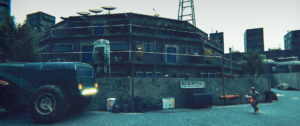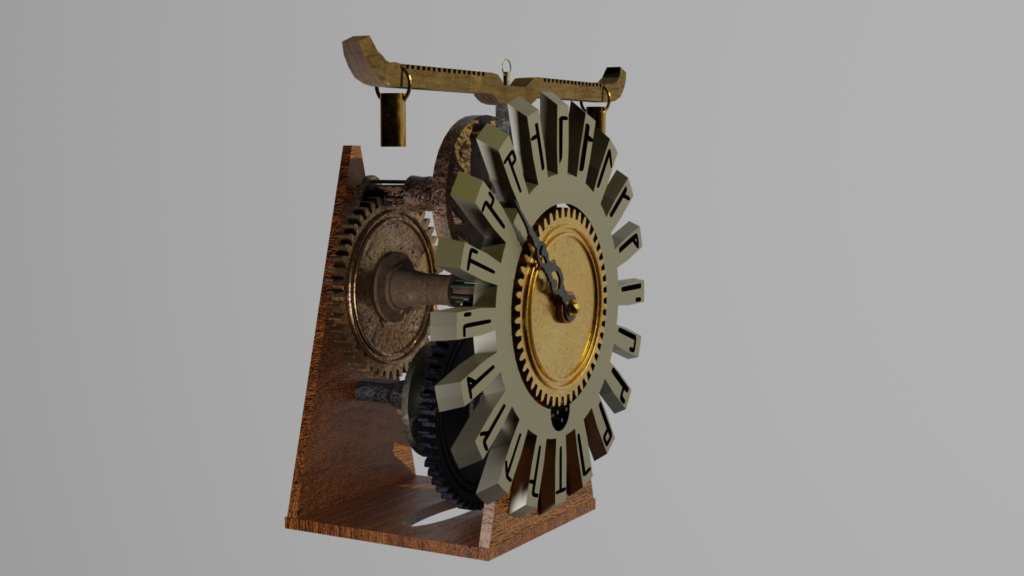For the past few devlogs, I’ve made vague references “making progress learning Blender”. I’ve now hit a point where I can coherently talk about what that means and how I’ve gone about it.
I’ve been learning Blender through various methods. Sometimes, I’ll have something I want to achieve, and just look up how to do that specific thing, watch or read a tutorial, and then figuratively bang on Blender with a hammer until it does something like what I imagined. There’s been a lot of that, which is great because it’s always 100% relevant to my needs, but … well, I’ll talk about the drawbacks in a bit. I’ve done this a lot with my Pompeii reconstruction project.
 I also just finished Grant Abbitt’s Complete Blender Creator 3: Learn 3D Modeling for Beginners on GameDev.tv, which was great because Abbitt’s a good teacher, and because it filled in parts that my hammer banging missed. Of course, it also had some stuff that I already knew, and stuff that I don’t think are skills I’m likely to use. But one the most valuable things about the course was his frequent reminders to have fun with the process. To play around. To save a copy so you can go back and then experiment. It made learning Blender play-like and exploratory, rather than a technical skill that must be mastered.
I also just finished Grant Abbitt’s Complete Blender Creator 3: Learn 3D Modeling for Beginners on GameDev.tv, which was great because Abbitt’s a good teacher, and because it filled in parts that my hammer banging missed. Of course, it also had some stuff that I already knew, and stuff that I don’t think are skills I’m likely to use. But one the most valuable things about the course was his frequent reminders to have fun with the process. To play around. To save a copy so you can go back and then experiment. It made learning Blender play-like and exploratory, rather than a technical skill that must be mastered.
 A third avenue of learning has been watching the live streams of Seth Rutledge, a professional in the entertainment industry. From him, I’ve been learning to differentiate what problems come up for everyone (e.g., the clunky default camera controls), and what issues might be just how one looks at the problem, while others are indeed the fact that I’m still relatively new at it. I’ve learned about a number of new plugins to streamline work, too. And I’ve gotten a deeper appreciation for the cycle of creating something, and then reusing that thing later–create not for one use but many. And I appreciate his attitude that if you like what you’ve made, that’s all that matters, calling labels like “artist” and “professional”–and here I quote him–“bullshit.”
A third avenue of learning has been watching the live streams of Seth Rutledge, a professional in the entertainment industry. From him, I’ve been learning to differentiate what problems come up for everyone (e.g., the clunky default camera controls), and what issues might be just how one looks at the problem, while others are indeed the fact that I’m still relatively new at it. I’ve learned about a number of new plugins to streamline work, too. And I’ve gotten a deeper appreciation for the cycle of creating something, and then reusing that thing later–create not for one use but many. And I appreciate his attitude that if you like what you’ve made, that’s all that matters, calling labels like “artist” and “professional”–and here I quote him–“bullshit.”
I’ve learned a ton, but there are drawbacks to this multiple streams of information, too. As I’ve been going along, I was working on a parallel project. I’ve been doing a bit of worldbuilding for a kind of alternative history game idea, though I don’t know whether it’ll end up as a tabletop roleplaying game, a video game, or some sort of interactive fiction. At any rate, I wanted to make a device of some sort. This is the end product.
I started off using Brian Law’s Wooden Clock 4 plans to give me some clockwork shapes to make. (My father had started making a wooden clock when I was a kid, so that stuck in my mind as kind of a cool idea.) I’d already used reference images for modeling humans for Pompeii, so that wasn’t particularly new. For the gears, I started using the Auto Mirror plugin after seeing Abbitt mention it. A drawback to the piecemeal learning, though, is it wasn’t until making the face of the clock at the very end that I realized the Add Mesh: Extra Objects plugin included a gear creation tool. So all but the face were modeled by hand.
Similarly, I found more than 70 textures/materials to try out and use, but it wasn’t until I’d made my own render of each texture, one by one on a custom object, that I learned that Blender had an asset library that would automatically display each texture and make it drag-and-drop if you set it up correctly. My process was not set up correctly to use the asset library, so I had to basically re-do a day’s work. But I understand more complex uses of it now that it’s set up right because of Rutledge’s live streams. (Make a building kit! Abbitt echoes this, too.)
Finally, my skill-by-skill searching taught me how to convert images or other screen shots into an .svg file, which could be imported as a Curve in Blender, then converted to a 3D mesh, which is how I did the Cistertian numerals on the clock face, and the hand of the clock.
It’s been a journey. A weird one that has put fuzzy edges on what felt originally like clear lines, and vice versa. It’s felt both hugely satisfying, and occasionally slightly like I was verging on an unhealthy obsession. But, focus is kind of like that while you’re in the grip of it. I’ve had dreams about modeling weird gears. That’s fine. Weird, but fine. But strangely, I think I kind of like doing stuff in Blender, and would have never predicted that.
Now I need to figure out something else to make to push my skills. Or get hired for something that requires me to do so. I’ve learned enough that I’m comfortable putting Blender on my portfolio now. Maybe it’s time to start on my own building kit…




